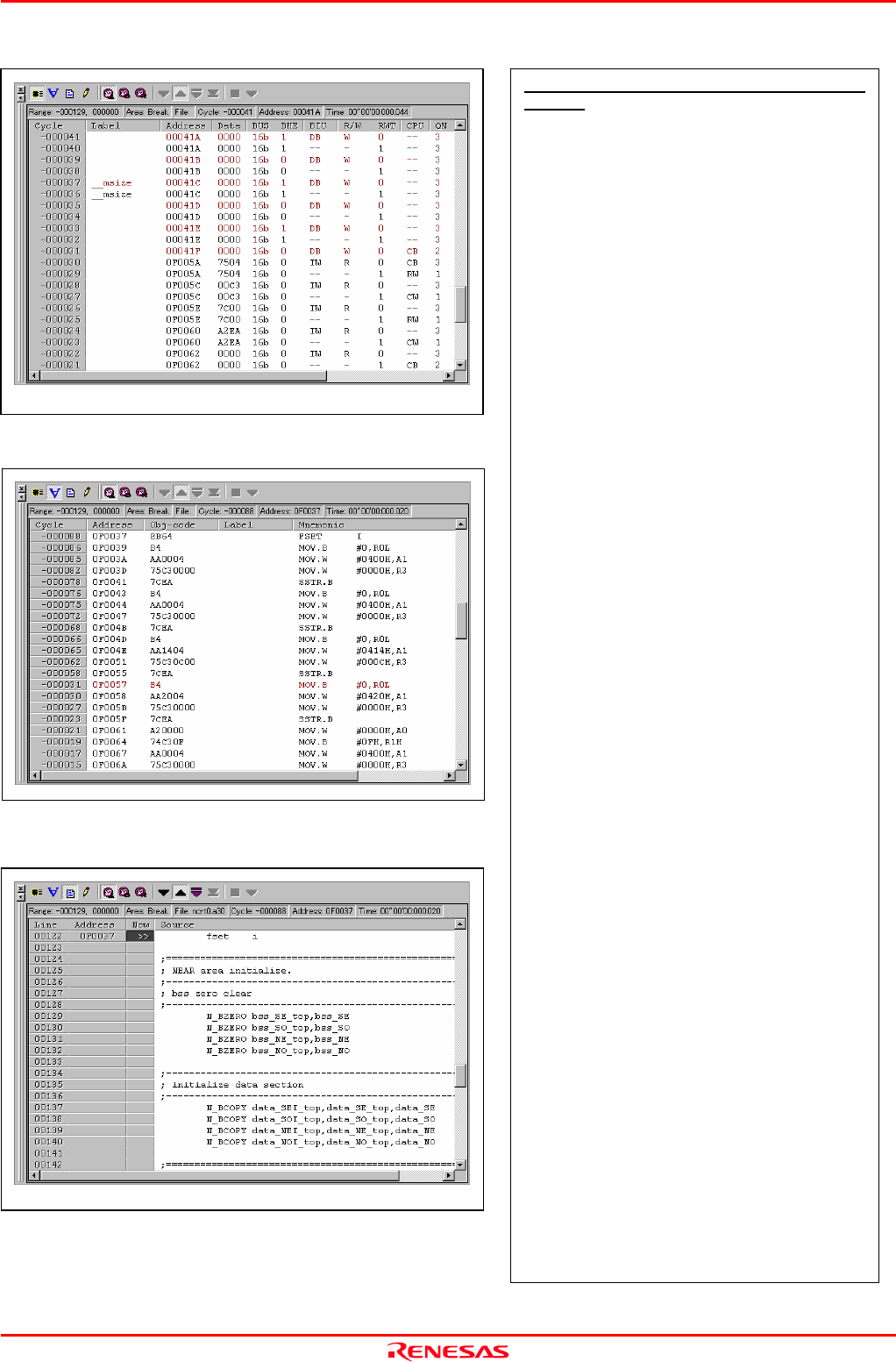
M3028BT-EPB User’s Manual 3. Usage (Emulator Debugger)
REJ10J1459-0200 Rev.2.00 Sep 16, 2006
3. Trace window (bus display)
Explanation of the trace window (bus
display)
The following explains the displayed contents, from left to
right.
- Cycle
Shows trace cycles. Double-click here to bring up a
dialog box to change the displayed cycle.
- Label
Shows labels corresponding to address bus information.
Double-click here to bring up a dialog box to search for
addresses.
- Address
Shows the status of the address bus.
- Data
Shows the status of the data bus.
- BUS
Shows the width of the external data bus. In the present
emulator, only “16b” for 16 bits wide bus is displayed.
- BHE
Shows the status (0 or 1) of the BHE (Byte High Enable)
signal. If this signal = 0, the odd-address data is valid.
- BIU
Shows the status between the BIU (Bus Interface Unit)
and memory or I/O.
Symbol Status
– Non-active
DMA Data access by other than the CPU, e.g., by
DMA
INT Starts INTACK sequence
IB Instruction code read by the CPU (in bytes)
DB Data access by the CPU (in bytes)
IW Instruction code read by the CPU (in words)
DW Data access by the CPU (in words)
- R/W
Shows the status of the data bus.
Displayed as “R” for Read, “W” for Write, and “–” for
no access.
- RWT
This is the signal to indicate a valid bus cycle. When
valid, RWT = 0. The Address, Data, and the BIU signals
are effective when this signal is 0.
- CPU
Shows the status between the CPU and BIU (Bus
Interface Unit).
Symbol Status
CB Op-code read (in bytes)
RB Operand read (in bytes)
QC Instruction queue buffer clear
CW Op-code read (in words)
RW Operand read (in words)
- QN
Shows the byte count stored in the instruction queue
buffer. The display range is 0 to 4.
- 76543210
Shows the level of external trace signal input cable
EXTIN0 to EXTIN7.
- h” m’ s: ms. us
Shows the elapsed time after starting the user program.
4. Trace window (disassemble display)
5. Trace window (source display)
Page 61 of 86


















